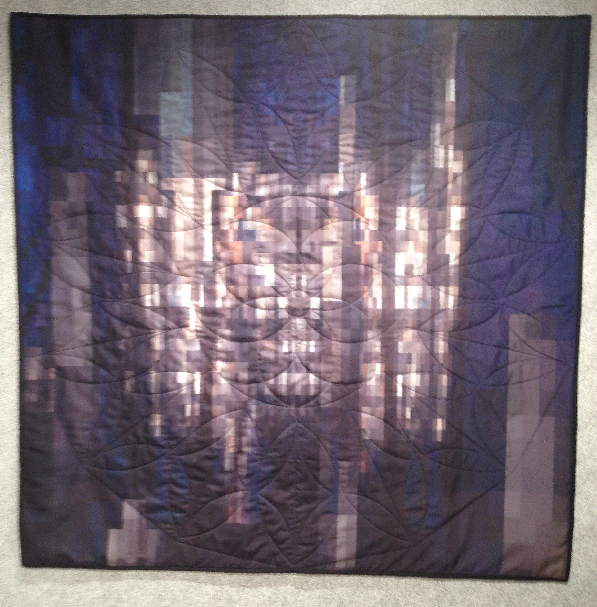All Quilts are 2013 and produced during a residency at the Institute for Electronic Arts, Alfred University, New York 2013.
The Security Blanket project began with the discovery of a political cartoon by Herb Block titled “National Security Blanket,” which depicts Richard Nixon wrapped in the US flag surrounded by his Watergate misdeeds. I found the piece, by chance, deep within the mysterious dark recesses of the library’s Special Collections room – a secure environment, unlike cyberspace, where I usually conduct my research.
That investigation resulted in three flag pieces: “2nd Amendment,” “Freedom and Hope,” and “Your Tired, Your Poor,” respectively.
However, after a closer analysis of the Block’s cartoon, it became evident that the flag was merely a visual misdirection, the sleight of hand that a magician uses to hide the concealed chicanery of a trick from the viewer. The most important elements of the cartoon were not the flag, but rather the objects and texts scattered throughout the composition’s background, the things that helped Nixon spin his web of deception: surveillance, data collection, intelligence networks, and the “money.”
Moreover, while trying to retrieve primary source documents regarding this catastrophic moment in American history, I found many of the records were either nonexistent, e.g. portions of the Nixon tapes, or redacted to the point of being useless for textual analysis. Visually, the redacted documents appeared to be architectural in nature, and in some cases resembled minimalist artistic constructions – a grand, if unconsciously aesthetic, a gesture of the government’s attempt to cover its tracks.
During the summer of 2012, on a business trip to Washington, DC, I visited many of the buildings that house the organizations responsible for our nation’s security: National Security Agency (NSA) HQ, National Geospatial-Intelligence Agency (NGA), and the Central Intelligence Agency (CIA). They were, to the one, innocuous facades that belied their importance and power as well as their invisible layers and connections to one another. In a sense, their nondescript-ness made them seem architecturally redacted, as the documents chronicling Nixon’s debacle – and like so many other investigations of public and private citizens, both vast and small.
Redacted or not, these monoliths of “intelligence” will set the stage and provide the backdrop for us as we wander through an architecturally abstracted paradise, under surveillance, with the distinct possibility that even our actions and thoughts may be recorded and erased. Although not set in stone, the future is malleable. In the end, the ultimate question may become, how well do you sleep under the blanket?








